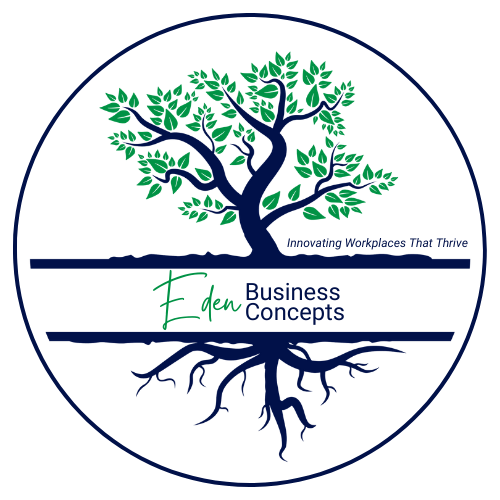

“When we’re faced with difficult and complex decisions, we typically experience difficult and complex emotions. Many of us don’t want to sit with these uncomfortable feelings, so we try to get the decision-making over with. But this often leads to poor decisions. We may not truly solve the problem at hand, and we often end up feeling worse. It’s an unproductive feedback loop that bookends our decisions with negative feelings.
These emotional bookends, however, can be your secret weapon in making better decisions. The process is as simple as taking the time to identify 1) the emotions you feel as you face your decision, and 2) the emotions you want to feel as you’re looking at your decision in the rearview mirror. What do you see? How is your life better for a satisfying decision outcome?”
– Cheryl Strauss Einhorn
Einhorn reminds us to use our “thinking, or ‘wizard brain,’ to check and channel our emotional, or ‘lizard brain,’ so that we don’t make reactive choices.”
A seminal article in Harvard Business Review helps us avoid some of those “lizard brain” traps:
The Hidden Traps in Decision Making, John Hammond, Ralph Keeney, Howard Raiffa
“Making decisions is the most important job of any executive. It’s also the toughest and the riskiest. Bad decisions can damage a business and a career, sometimes irreparably. So where do bad decisions come from? In many cases, they can be traced back to the way the decisions were made—the alternatives were not clearly defined, the right information was not collected, the costs and benefits were not accurately weighed. But sometimes the fault lies not in the decision-making process but rather in the mind of the decision maker. The way the human brain works can sabotage our decisions.”
The Anchoring Trap
When considering a decision, the mind gives disproportionate weight to the first information it receives. Initial impressions, estimates, or data anchor subsequent thoughts and judgments.
- Always view a problem from different perspectives.
- Think about the problem on your own before consulting others to avoid becoming anchored by their ideas.
- Be open-minded.
- Be careful to avoid anchoring your advisers, consultants, and others from whom you solicit information and counsel. Tell them as little as possible about your own ideas, estimates, and tentative decisions.
- Be particularly wary of anchors in negotiations. Think through your position before any negotiation begins to avoid being anchored by the other party’s initial proposal.

The Status Quo Trap
Decision makers display a strong bias toward alternatives that perpetuate what is familiar or already in place.
- Remind yourself of your objectives and examine how the status quo would serve them. You may find that elements of the current situation act as barriers to your goals.
- Never think of the status quo as your only alternative.
- Ask yourself whether you would choose the status-quo alternative if it weren’t the status quo.
- Avoid exaggerating the effort or cost involved in switching from the status quo.
- Remember that the desirability of the status quo will change over time.
- If you have several alternatives that are superior to the status quo, force yourself to choose.
The Sunk-Cost Trap
Making choices in a way that justifies past choices, even when the past choices no longer seem valid: old investments of time or money that are now irrecoverable.
- Seek out and listen carefully to the views of people uninvolved with the earlier decisions and who are unlikely to be committed to them.
- Examine why admitting to an earlier mistake distresses you. Remember the wise words of Warren Buffett: “When you find yourself in a hole, the best thing you can do is stop digging.”
- Be on the lookout for the influence of sunk-cost biases in the decisions and recommendations made by your subordinates.
- Don’t cultivate a failure-fearing culture that leads employees to perpetuate their mistakes.
The Confirming-Evidence Trap
Our tendency to subconsciously decide what we want to do before we figure out why we want to do it. Our inclination is to be more engaged by things we like than by things we dislike.
- Always check whether you are examining all the evidence with equal rigor.
- Get someone you respect to play devil’s advocate, to argue against the decision you’re contemplating. Consider the position with an open mind.
- Be honest with yourself about your motives.
- In seeking the advice of others, don’t ask leading questions that invite confirming evidence.
The Framing Trap
How a problem is framed can profoundly influence your choices.
- Don’t automatically accept the initial frame; look for distortions caused by the frames.
- Try posing problems in a neutral, redundant way that combines gains and losses or embraces different reference points
- Think hard throughout your decision-making process about the framing of the problem.
- When others recommend decisions, examine the way they framed the issue. Challenge them with different frames.
The Estimating and Forecasting Traps
In the face of uncertainty, the best way to avoid estimating and forecasting traps is to take a disciplined approach to making forecasts and judge probabilities.
- The Overconfidence Trap
- The Prudence Trap
- The Recall ability Trap
Dennis and I like to see ourselves as the Harbor Pilots for your leadership. We can help steer you around the traps, avoid the issues that will damage you or others, and move your company to thrive.
We can help you navigate your decision making process – contact us for a conversation.
If you haven’t had a chance to listen to our latest podcast, you can check it out here:
For the Heart of Your Business!

Q&A for this topic:
- How do you feel about decision making? Is it easy or painful? Why?
- Who do you trust to help you navigate tough decisions?
- How to walk with other leaders and help them avoid decision making traps
- Who do you mentor or coach as they are learning how to make good decisions?



